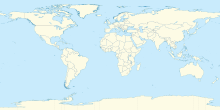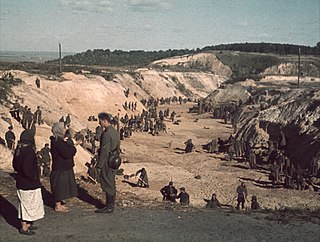
Babi Yar or Babyn Yar is a ravine in the Ukrainian capital Kyiv and a site of massacres carried out by Nazi Germany's forces during its campaign against the Soviet Union in World War II. The first and best documented of the massacres took place on 29–30 September 1941, killing some 33,771 Jews. Other victims of massacres at the site included Soviet prisoners of war, communists and Romani people. It is estimated that a total of between 100,000 and 150,000 people were murdered at Babi Yar during the German occupation.

Olena Ivanivna Teliha was a Ukrainian poet and activist of Ukrainian and Belarusian ethnicity.

Anatoly Vasilievich Kuznetsov was a Russian-language Soviet writer who described his experiences in German-occupied Kiev during World War II in his internationally acclaimed novel Babi Yar: A Document in the Form of a Novel. The book was originally published in a censored form in 1966 in the Russian language.
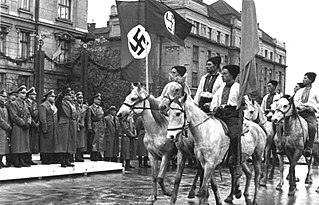
Ukrainian collaboration with Nazi Germany took place during the occupation of Poland and the Ukrainian SSR, USSR, by Nazi Germany during the Second World War.

Drobytsky Yar is a ravine in Kharkiv, Ukraine and the site of Nazi massacres during the Holocaust in Ukraine. Starting in October 1941, Nazi troops occupied Kharkiv and began preparations for the mass-murder of the local population. Over the following months, members of the Einsatzgruppen murdered an estimated 16,000–30,000 local residents, mainly Jews. Notably on 15 December 1941, when the temperature was −15 °C (5 °F), around 15,000 Jews were shot. Children were thrown into pits alive, to save bullets, in the expectation that they would quickly freeze to death. The site's menorah monument was allegedly damaged by Russia on March 26, 2022 in an artillery exchange during the invasion of Ukraine.

The Kurenivka mudslide occurred on 13 March 1961 in Kyiv, then a city in the Ukrainian SSR, Soviet Union. It took place near the historic Babi Yar ravine, which had been the site of the mass murder of more than 100,000 Jews and other civilians during World War II. The mudslide began at the edge of the ravine and dumped mud, water, and human remains into the streets of Kyiv. The Soviet authorities suppressed information about the disaster, and claimed 145 people were killed, while forbidding any memorial events for the victims. A 2012 study in Ukraine estimated that the number of victims was closer to 1,500.
Babi Yar: A Document in the Form of a Novel is a documentary novel by Anatoly Kuznetsov, about the Nazi occupation of Kyiv and the massacres at Babi Yar. The two-day murder of 33,771 Jewish civilians on 29–30 September 1941, in the Kyiv ravine was one of the largest single mass killings of the Holocaust.
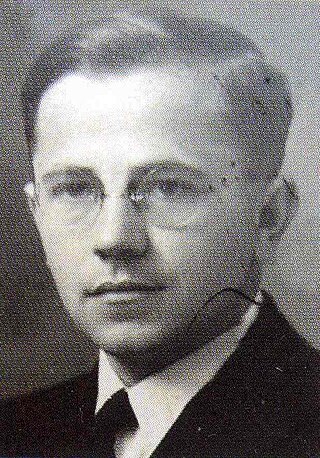
Ivan Andriyovych Rohach was a Ukrainian journalist, poet, writer, and political activist.

The Kiev-West or Syrets was a Nazi concentration camp or established in 1942 in Kyiv's western neighborhood of Syrets, part of Kyiv since 1799. The toponym was derived from a local small river. Some 327 inmates of the KZ Syrets were forced to remove all traces of mass murder at Babi Yar.

The Holocaust in Ukraine was the systematic mass murder of Jews in the Reichskommissariat Ukraine, the General Government, the Crimean General Government and some areas which were located to the East of Reichskommissariat Ukraine, in the Transnistria Governorate and Bessarabia, Northern Bukovina and the Hertsa region and Carpathian Ruthenia during World War II. The listed areas are currently parts of Ukraine.
Poems about Babi Yar commemorate the massacres committed by the Nazi Einsatzgruppe during World War II at Babi Yar, in a ravine located within the present-day Ukrainian capital of Kyiv. In just one of these atrocities – taking place over September 29–30, 1941 – 33,771 Jewish men, women and children were killed in a single Einsatzgruppe operation.

Dina (Vera) Mironovna Pronicheva was a Soviet Jewish actress at the Kiev Puppet Theatre, military communications-trained 37th Army of the Soviet Union veteran, and a survivor of the 29–30 September 1941 Babi Yar massacre of Jews by Nazi German forces in Kyiv who also worked for the German occupation.
World Forum Of Russian-Speaking Jewry — is an international, nonprofit, nongovernmental organization that brings together dozens of diaspora communities and structures of Russian-speaking Jews living in Israel, Canada, the U.S., the European Union and the former USSR.
The history of the Jews in Kyiv stretches from the 10th century CE to the 21st century, and forms part of the history of the Jews in Ukraine.
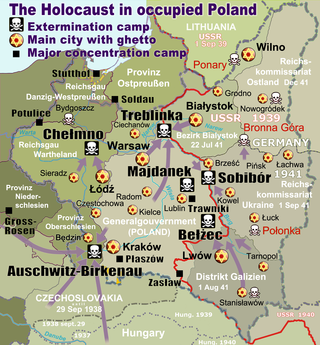
The Pińsk Ghetto was a Nazi ghetto created by Nazi Germany for the confinement of Jews living in the city of Pińsk, Western Belarus. Pińsk, located in eastern Poland, was occupied by the Red Army in 1939 and incorporated into the Byelorussian SSR. The city was captured by the Wehrmacht in Operation Barbarossa in July 1941; it was incorporated into the German Reichskommissariat Ukraine in autumn of 1941.

Babi Yar Holocaust Memorial Center, officially the Foundation and Babyn Yar Holocaust Memorial Center, is an educational institution that documents, explains and commemorates the Babi Yar shootings of September 1941 and aims to broaden and sustain the memory of The Holocaust in Eastern Europe, taking into account geopolitical changes during the 20th century. On September 29, 2016, President of Ukraine Petro Poroshenko, together with public figures and philanthropists, initiated the creation of the first Babi Yar Holocaust Memorial Center. The Memorial Center is planned to be opened in Kyiv, Ukraine, in 2025/26.
Victoria Khiterer is associate professor of history at Millersville University, Pennsylvania, adjunct professor at Gratz College, and a founding member of the Scientific Council of the Babyn Yar Holocaust Memorial Center in Kyiv, Ukraine.
Symbolic synagogue and place for prayer in Babyn Yar - is an art object of the Babi Yar Holocaust Memorial Center, built on the territory of the National Historical Memorial Preserve "Babyn Yar" as a part of preparations to commemorate the 80th anniversary of the first massacres in Babyn Yar.
Raphael Rutman — is a Chabad Rabbi and a Shliach ("emissary") of the Lubavitcher Rebbe Menachem Mendel Schneerson. Executive Chairman of the Federation of Jewish Communities of Ukraine.

Babi Yar. Context, also known as Babyn Yar. Context, is a 2021 documentary film by the Ukrainian filmmaker Sergei Loznitsa that explores the prelude and aftermath of the World War II massacre of nearly 34,000 Jews at Babi Yar in Kyiv, Ukraine in September 1941.
